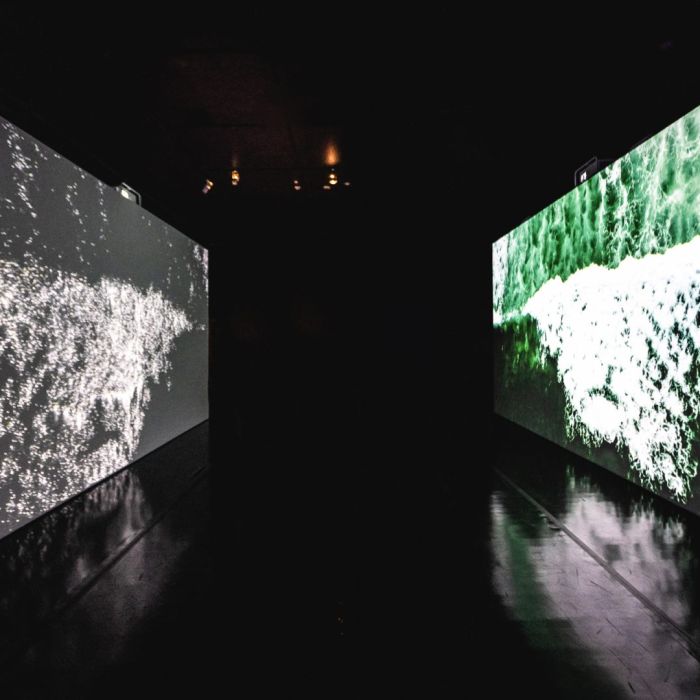Emotional Web (Public) Conversations on Brazil Elections Contrast with Subdued Media Coverage
LatAm Intersect PR publishes latest monthly Emotional Climate Report (ECR) for Latin America reveals emotions driving content on the Web and media
ECR technology applied to public and press emotions around the issue of Presidential Candidates in the upcoming Brazilian election
As the penultimate month in the run-up to the Brazilian presidential elections, August saw the final four presidential hopefuls move their campaigns up a gear. All four candidates intensified their electioneering with campaign videos, primetime TV interviews, and the first multi-party presidential debate.
According to the latest Emotional Climate Report data media reporting on the four candidates remained generally ‘flat’ (ie. devoid of emotional peaks or swings), while emotions expressed directly by the public on the Web (public) registered clear emotional ‘spikes’ around a series of key dates for each candidate.
What hypotheses can we draw from this? Has the media largely settled on its defined emotional ‘climates’ for each candidate while direct Web (public) user emotions remain erratic and fluid?
News emotional insights
The seven-day media average registered 31,139 data points for this month (ie. instances of core emotions being associated with each candidate). The most commonly reported emotions for each candidate were ‘anticipation’ for third-party candidates Ciro Gomes (1,517 or 20.71%) and Simone Tebet (1,267 or 20.75%) and ‘sadness’ for incumbent Jair Bolsonaro (1,601 or 16.21%) and frontrunner Lula (1,369 or 16.21%).
The charts show similar patterns of emotions around both the two third-party candidates and the two frontrunners. Ciro Gomes and Simone Tebet saw a small peak of ‘anticipation’ around the 18th and 19th August (figure 1. & figure 2.), which coincided with the release of Datafolha election polling. Simone Tebet also saw a small rise in ‘fear’ around August 26th (figure 3.), the date of her interview with the Globo channel’s popular Jornal Nacional. Could campaign nerves have been reflected in the media’s coverage of the perpetually fourth-placed candidate?
The two frontrunners, Jair Bolsonaro and Lula, instead saw small peaks of ‘sadness’ around the 25th August (figure 4. & figure 5.), which coincided with the transmission of Lula’s interview with Jornal Nacional. Could the ‘sadness’ associated with Bolsonaro on this day be connected to the impression that Lula performed better than his rival, or did it echo the incumbent’s complaint that Lula was given an easier ride?
Web (Public) emotional insights
Our Emotional Climate Report registered a staggering 65 billion data points in the context of the four major Brazilian presidential candidates this August; there were plenty of emotions expressed around each!
Once again, Ciro Gomes and Simone Tebet picked up significantly more data points than the two leaders of the race. Ciro Gomes attracted 21.7billion, Simone Tebet 20.8billion, Lula 12.4billion and Jair Bolsonaro trailed with 10.5billion data points.
Three significant emotional spikes were picked up by each presidential candidate on almost the same days. They occurred on August 3rd and 4th, August 18th and August 28th. On August 3rd, the big announcement came from the leader of the chamber of deputies, Arthur Lira, who explicitly stated that the results of the presidential election ‘will be respected,’ in what many saw as a rebuttal to Bolsonaro’s continued undermining of the Brazilian democratic process. On August 18th, Datafolha released their latest polling data. And on August 28th, all four candidates participated in the first presidential debate of the campaign.
Coinciding with Lira’s statement on August 3rd, Ciro Gomes saw a huge spike in the emotion of ‘jealousy’ associated with his name (figure 6.). Could this be a reference to the outspoken candidate’s wish to have the same kind of power-broker status as Lira? For the Datafolha polling results, almost equal spikes of ‘jealousy,’ ‘disgust’ and ‘happiness’ were associated with Ciro Gomes (figure 7.), which seem to be reasonable reactions to his polling a strong third place ahead of Simone Tebet, while still only winning 7% of the intended vote. Finally, on August 28th Ciro’s name attracted emotions of ‘loneliness,’ ‘anticipation’ and ‘happiness,’ a fair reflection of a candidate who was seen to perform well at the debate but almost certainly won’t make it into the second round of voting.
Bolsonaro, on the other hand, saw successive spikes of ‘loneliness’ and ‘sadness’ around August 3rd and 4th (figure 8.), followed by another huge spike of ‘sadness’ on August 13th (figure 9.). Apart from Lira’s pronouncement on the 3rd, there doesn’t seem to be much cause for the second spike of ‘sadness’ aside from Bolsonaro participating in a podcast and having to answer for his alleged proximity to convicted murderer and evangelical pastor Guillherme Padúa. On August 18th, Bolsonaro saw a spike of ‘happiness’ (figure 10.) that coincided with positive polling data, while on the night of the debate (figure 11.) Bolsonaro’s name was associated with small spikes of ‘anticipation’ and ‘fear.’
August 3rd registered a big spike in ‘jealousy’ around Lula’s name (figure 12.), which, again could be a similar feeling to Ciro’s potential wish to be in the position of power that the leader of the chamber of deputies, Arthur Lira, currently occupies. August 18th saw a massive spike in ‘happiness’ (figure 13.) as polling data continued to show Lula with a strong lead over his nearest rival Bolsonaro. And then the first presidential debate saw spikes of ‘jealousy,’ ‘happiness’ and ‘fear’ (figure 14.). This jealousy could be a result of the female candidates such as Simone Tebet being seen to have performed better than the male candidates, Lula included.
Simone Tebet’s chart saw a spike in ‘loneliness’ on August 3rd (figure 15.). Perhaps the centrist candidate and her supporters are feeling isolated from the powerful ‘centrão’ bloc of political parties who hold so much power but are unable to turn that into votes for Tebet. August 18th brings with it a massive spike in ‘jealousy’ (figure 16.) as all other candidates poll significantly better than Tebet’s 2%. And finally, the debate on August 28th brings with it a small spike of ‘happiness’ (figure 17.) as Tebet is widely seen as the best performer on the night, although the spike also contains smaller spikes of ‘fear’ and ‘anticipation’ as it’s hard to see how Tebet can forge a way forward from her single-digit polling position.
“This month has seen a massive increase in the amount of exposure, and scrutiny, for each candidate,” comments Roger Darashah, Co-founder of LatAm Intersect PR. “While the two third-party candidates, Ciro Gomes and Simone Tebet, are seeing a boost in their polling numbers because of this, and have generally communicated their platforms as compelling alternatives to the two polarized frontrunners, Lula and Bolsonaro aren’t faring quite as well under the intensity of the spotlight.”
“Bolsonaro has all but forfeited his place in subsequent presidential debates, at least until the eve of the first round of voting, as he performed less well than expected during the first debate, receiving attacks from virtually all the other candidates. He is also looking to skip many mainstream media interviews, instead concentrating on his forte: social media and more sympathetic outlets.”
“With the latest polls pushing frontrunner Lula within 6 percentage points of the 51% vote that would see him win a historic first round victory, the onus is on Bolsonaro to turn the tide. Will reports of Brazil’s impressive economic growth spur voters back to the incumbent, or will the conveniently timed media reports of his family’s property deals stall his polling numbers further? As we reach the final furlong, it’s going to be an electrifying climax to what is set to be the most polarizing election in recent Brazilian history.”
LatAm Intersect PR will be publishing monthly Emotional Climate Reports on key issues of interest to the region such as: vaccines, economics, politics, crypto-currencies, the environment, diversity and equality.
“The technology reflects the basis of our agency, our audience-based programming methodology, and why we created them. Society’s number one favorite subject is itself; individuals are the new protagonists. The sooner and better brands understand what and how the public thinks, the deeper they’ll be able to engage,” he concludes.
Emotional Climate Reports are currently available in Argentina (Spanish), Brazil (Portuguese), Chile (Spanish), and Mexico (Spanish); versions for Colombia (Spanish) and Peru (Spanish) will follow.




